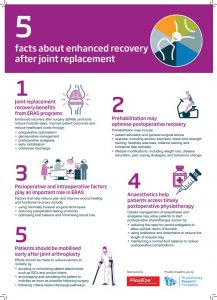How can physio help with vestibular conditions?
Did you know Physiotherapists can help with assessment and treatment of some vestibular conditions?
What is the Vestibular System?
The vestibular system, located within the inner ear, is responsible for helping you maintain balance and spatial orientation. It detects changes in movement and position, sending signals to the brain to keep you balanced. When this system is disrupted, it can lead to dizziness, vertigo, and difficulties with balance. The most common condition treated through physiotherapy is Benign Paroxysmal Positional Vertigo (BPPV).
How Vestibular Physiotherapy Can Help
Our vestibular physiotherapists use evidence-based techniques to assess and treat vestibular disorders, aiming to reduce symptoms and restore normal function. Treatment may include:
- Canalith Repositioning Maneuvers: Specific head movements to treat BPPV by relocating displaced crystals in the inner ear.
- Balance and Gait Training: Exercises designed to improve stability and reduce fall risk.
- Habituation Exercises: Gradual exposure exercises to help reduce sensitivity to motion and dizziness triggers.
- Eye and Head Coordination Exercises: Techniques to improve eye movement control and reduce dizziness with head movements.
If you have any questions in regards to vestibular physiotherapy assessment and/or treatment, please contact us on 07 3888 6699 or 07 3886 9470. You can also book online using our website portal.
5 Facts about TemporoMandibular Joint (TMJ) Disorders
At Moreton All Body Care, we have a TMJ physiotherapist that can help assess and treat your TMJ disorders. If you would like more information, please contact us on 07 3888 6699 or make a booking using our online booking portal.
Are you due for a joint replacement surgery?
Whether you are having a Total Knee Joint Replacement (TKR) or a Total Hip Joint Replacement (THR) Here is some information from the Australian Physiotherapy Association on enhancing your recovery after a joint replacement surgery that you might like to know:
All our physiotherapists at Moreton All Body Care are highly skilled to help with your recovery following a joint replacement surgery. If you would like more information or would like to book in to see one of our physiotherapists, please do not hesitate to contact us.
What does a Physiotherapist actually do?
Ever wondered what a physiotherapist actually does? Physiotherapists are professionals trained at assessing, diagnosing and treating a range of conditions and injuries to all areas of the body with the overall goal to improve function and reduce pain levels. At Moreton All Body Care we not only see people with sporting injuries and sore backs but also patients with repetitive strain injuries, neck pain or headaches, patients requiring rehabilitation after surgery or general muscular/arthritic/bursitis aches and pain. These can include workcover related, third party claims (e.g. motor vehicle accidents) and department of veteran affairs (DVA) patients.
During a standard 30min consult, physiotherapist’s conduct a range of special tests to determine the cause and contributing factors to your symptoms. Based on this they are able to advise you on the best treatment approach and provide manual therapy if appropriate. Follow up appointments are generally required to review your injury, and to progress your treatment and exercises as you get better. If this is the case the physio will discuss this with you. A medical certificate can be written if you require time off work or sport.
Treatment techniques commonly used include:
– Joint mobilisations to reduce stiffness and help restore any deficit to your range of motion. If your joints aren’t moving freely they become irritated and can be a cause of pain or place more load on surrounding structures which causes dysfunction. For example, your spine is made up of multiple levels (vertebrae) and if there is a stiff link it will change the way you move. Gentle manipulations can move and stretch the stiff area to get your joints moving again.
– Soft tissue techniques such as massage or trigger point release is an effective way of accelerating the body’s healing and recovery process by bringing more blood flow and oxygen to the area. It can relax tight or overworked muscles that are creating excessive stress on your joints.
– Prescription of individualised strengthening exercises to be performed at home to quicken your recovery.
– Stretches to lengthen tight muscles, stretch joints and/or help with posture correction.
– Pilates program development to improve strength, stability and flexibility. This can be matwork or reformer based.
– Dry needling (similar to acupuncture) of myofascial tissue. Points are stimulated to create local, spinal segmental or supraspinal pain modulating effects.
– Taping to restrict joint movement and minimise further structural damage to ligaments or muscles. Also used to improve biomechanics to address movement dysfunctions contributing to pain
– Education regarding your condition, appropriate rest required, activity modifications and load management strategies to minimise any further exacerbation of your condition. They are able to provide guidance as to whether scans (e.g. ultrasound, xrays, MRI) are required.
All treatment techniques are accommodated to your specific needs. It is never too early or late after an injury or onset of your pain to seek assistance by a physiotherapist. A referral by a GP is NOT required.
Cervicogenic Headaches
Headaches Are a Pain in the Neck!
Headaches are, unfortunately, something that affects many of us, and some of us even daily! So it’s important to understand what type of headache you might suffer from, and if there are steps you can take to be able to prevent it. There are three main types of headache disorders: migraine, tension type headaches (TTH) and cervicogenic headaches (CGH). CGHs account for up to 20% of all headache disorders and often present as moderate to severe pain that starts in the neck and can last from four hours to a few weeks.
People who suffer from CGHs will often have a variety of symptoms such as:
• Pain and stiffness in the neck that is aggravated with movement.
• Tenderness in the neck – often associated with referral pain.
• Decreased movement at the affected
• Headaches that are one-sided and feel that they start in the neck.
• Pain in areas such as the temples, around the ears, behind the eyes and the back of the head.
• Nausea, poor concentration and irritability.
CGHs are considered a secondary type headache, meaning that the cause of the headache originates from some place other than in the head. In the case of CGH, the culprit is the upper cervical spine (the top three bones in your neck). Pain is often felt behind the eyes, in the temple region or at the back of the head. Although it sounds strange that the cause of the headache and where you feel the headache are in different places, it makes a lot of sense when you consider the anatomy behind it. The roots of the nerves connecting to the upper cervical spine share a sensory processing centre in the brain with the trigeminal nerve, which is responsible for carrying information from your brain to your jaw and face, and vice versa. Due to the shared processing centre, pain is felt in the head when it is originally coming from the neck.
So what can cause CGH? Injury or dysfunction of the upper cervical spine can occur due to a range of different conditions. Some of these include osteoarthritis, whiplash, sleeping in awkward positions or poor posture.
The good news is that many research articles support physiotherapy interventions as a successful treatment option for managing CGH. Treatment is often aimed at improving range of motion at the affected vertebrae, decreasing muscular stiffness, and decreasing pain. Techniques that may be used by your physiotherapist include joint mobilisations, soft tissue massage, stretching, muscular strengthening and retraining, dry needling and other exercises.
Your physiotherapist will perform a detailed assessment comprised of an interview and physical examination to determine the cause of the headache. Physiotherapy treatment will usually include a component of manual therapy (hands on treatment) as well as prescribed exercises.
If you do suffer from headaches, you don’t need to suffer alone! Say goodbye to nuisance headaches and come on in for a visit to see what physiotherapy can do for you to sort out your pain in the neck.

